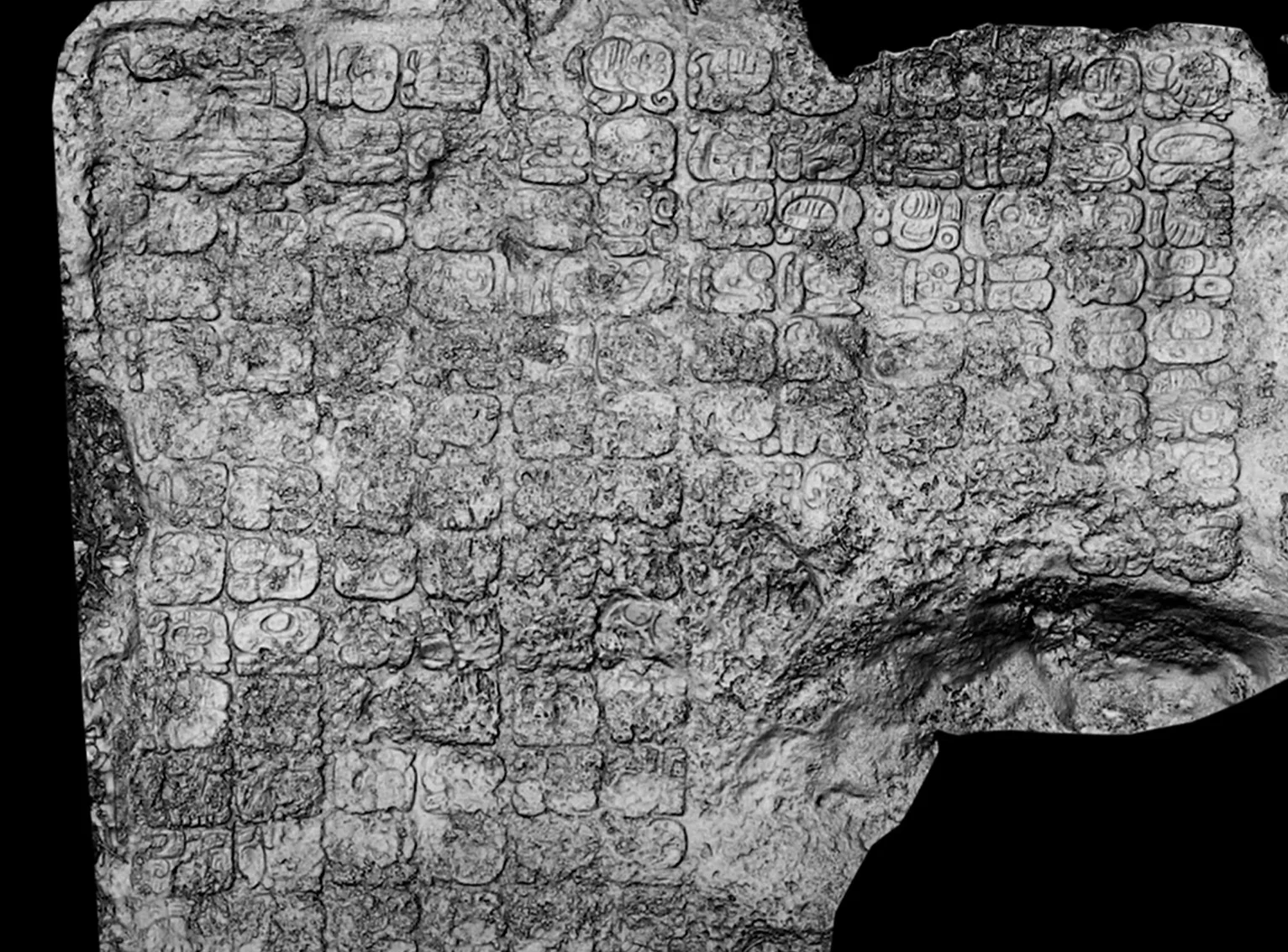Archaeologists from the National Institute of Anthropology and History (INAH) have discovered a giant stone panel carved onto the floor of a sacred pool at Cobá.
Cobá is a Late Preclassic to Late Postclassic Maya polity, located on the Yucatán Peninsula in the Mexican state of Quintana Roo.
Coba was estimated to have had some 50,000 inhabitants at its peak, with the bulk of construction taking place in the Middle and Late Classic Period (AD 500 to 900).
Recent excavations have unearthed a monumental stone panel engraved with 123 Maya glyphs on the floor of a sacred pool near the Nohoch Mul, a 42 metre tall pyramid.
According to a press statement by INAH, the combined glyphs form an a L-shape, covering an area of over 11 square metres.
Various engraved and sculpted stelae have been discovered in Cobá previously, however, this new discovery fills in a gap in the dynastic sequence of the city.
An epigraphic study has unveiled the name of K’awiil Ch’ak Chéen, a previously unknown ruler of Cobá, who took on the name of K’awil (God K) – the Maya lightning god.
The glyphs also refer to the founding of the town of Keh Witz Nal in the year AD 569, and a group of tutelary gods or lords who founded Cobá, such as Bolón Tz’akab Ajaw (meaning dynastic lords).
Archaeologists are now working to preserve the monument, which has suffered erosion caused by rainfall and stagnating water. At the same time, a high-precision record of the glyphic text has been made in 3D, providing a permanent record for more in-depth epigraphic studies.
Header Image Credit : INAH
Sources : INAH





